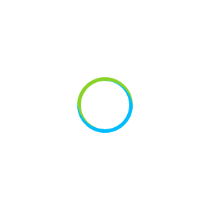Clinical Trials & Pipeline
Clinical Trials & Pipeline
At Bayer, our focus is to discover and develop medicines that provide the opportunity to live a healthier life. We are actively pursuing our vision to deliver best-in-class patient care, outcomes, and experience by advancing science.
Information on investigational compounds and clinical trials sponsored by Bayer is made available here to increase the transparency of Bayer's clinical research. Below you can learn more about trials sponsored by Bayer. Research sponsored by independent investigators is not included.
Bayer's Clinical
Trials Explorer
Bayer's Development
Pipeline
Ongoing Trials
ESTeeM
A study to learn more about how menopause affects women’s sleep and how they are being treated for sleep problems.

STUDY DESIGN
- Observational Study
- Females 40 to 65 years with sleep disturbances and vasomotor symptoms (VMS)
- Information will be collected on sleep patterns, night wakenings, use of therapies for sleep disturbances, and how sleep problems affect quality of life over a four-week period
- Assessments will come from electronic health records (EHR), patient-reported outcomes (PRO), and smartwatches
STUDY POPULATION
- N = 1,000 (estimated)
Inclusion Criteria:
- Women experiencing menopause assigned female at birth, 40-65 years of age, residing in the United States
– Menopausal period is defined as ≥12 months of spontaneous amenorrhea prior to index date (the date informed consent was signed) or surgical bilateral oophorectomy with or without hysterectomy ≥6 weeks prior to index date - Sleep disturbances due to menopause, defined as self-reported disturbances characterized by waking up at night and/or poor quality of sleep (including difficulty falling asleep, short sleep, waking up early)
- Signed informed consent form by the patient
- Provided access to medical records, directly granting access through the HRS platform and the provider’s portal or providing contact information and a medical records release form
Exclusion Criteria:
- Menopause induced chemically or from radiation therapy (i.e., chemotherapy)
- Medical conditions that impact sleep, including diagnosed chronic insomnia, sleep apnea, restless leg syndrome, circadian rhythm sleep disorder; current or history (except complete remission for 5 years or more) of any malignancy (except basal and squamous cell skin tumors)
- Women self-reporting being under the care of a HCP for suicidal ideation, clinical anxiety, or clinical depression in the past six months
- Participants in a clinical trial
- Pregnant women
OUTCOME MEASURES
Primary Outcomes:
Number of awakenings in the night.
Timeframe: From Day 1 to Day 28
Mean WASO (wakefulness after sleep onset).
Total number of minutes that a participant is awake after having initially fallen asleep
Timeframe: From Day 1 to Day 28
Mean number of moderate or severe hot flashes per night.
Timeframe: From Day 1 to Day 28
Mean sleep efficiency score.
Defined as the percentage of time spent asleep while in bed
Timeframe: From Day 1 to Day 28
Mean length of time (in minutes) to fall asleep.
Timeframe: From Day 1 to Day 28
Mean total sleep disturbance score (T-score) derived from PROMIS-SD-SF-8b.
PROMIS-SD-SF-8B: Patient-reported Outcomes Measurement Information System Sleep disturbance short form 8b.
Timeframe: Day 1, Day 14 and
Day 28Menopause-specific quality-of-life questionnaire (MENQOL) total score.
Measured by ePRO.
Timeframe: Day 1, Day 14 and
Day 28Insomnia Severity Index (ISI) total Score.
Timeframe: Day 1, Day 14 and
Day 28Socioeconomic status short-form questionnaire.
Timeframe: Day 0
Secondary Outcomes:
Descriptive analysis of demographics.
Timeframe: Day 0
Descriptive analysis of clinical characteristics.
Timeframe: Day 0
Lifestyle questionnaire.
Questionnaire includes smoking history, alcohol consumption, caffeine consumption, other persons in the home and work schedule.
Timeframe: Day 0
Comorbid conditions and dates of diagnosis from patient EHR (electronic health record).
Timeframe: Day 0
Concomitant medications, from patient medication survey.
Timeframe: Day 0
Body mass index (BMI).
Timeframe: Day 0
Number of previous pregnancies from patient EHR.
Timeframe: Day 0
Non-pharmacologic treatments for sleep disturbances.
Timeframe: Day 0
Number of EHR (electronic health record) documented prescriptions for sleep disturbances.
Timeframe: Retrospective analysis from 12 months prior to ICF
Number of patient-reported medications and supplements for sleep disturbances.
Timeframe: From 6 months prior
Day 1Number of patients reporting alternative treatment/management for sleep disturbances.
Timeframe: Day 0
Questionnaire of satisfaction score for medications and supplements used to treat sleep disturbances.
Timeframe: From 6 months prior
Day 1Names of prescription and non-prescription medications and supplements for sleep disturbances reported in Daily Morning Diaries, including dosage.
Timeframe: Day 1 to Day 28
List of types of treatment formerly prescribed for sleep disturbances, from patient medication survey.
Timeframe: Day 0
Duration of treatments formerly prescribed for sleep disturbances, by drug class, from patient medication survey.
Timeframe: Day 0
Proportion of days PRN medication used.
Timeframe: From Day 1 to Day 28
Among medications for sleep disturbances discontinued within 6 months of enrollment, patient reported reason for discontinuation.
Timeframe: Day 0
Mean HADS (Hospital Anxiety and Depression Scale) total score.
Timeframe: Day 0
NCT06728332
Acronyms:
BMI: Body mass index
EHR: Electronic health record
HADS: Hospital anxiety and depression scale
ISI: Insomnia severity index
MENQOL: Menopause-specific quality-of-life
PRO: Patient-reported outcome
PROMIS SD SF 8b: Patient-reported outcomes measurement information system sleep disturbance short form 8b
WASO: Wakefulness after sleep onset



